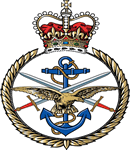Commemorated: | |||
| 1. Grave: | Tyne Cot Memorial | XIV. D. 18. | |
| 2. Book: | The (1921) Masonic Roll of Honour 1914-1918 | Pg.129 | |
| 3. Memorial: | The (1940) Scroll - WW1 Roll of Honour | 14C GQS | |
Awards & Titles: | |||
Service Life:
Campaigns:
- The First World War 1914-1918, World-wide.
| Unit / Ship / Est.: 5th Battalion Seaforth Highlanders |
| Action : The Battles of Ypres 1917 (Third Ypres, or Passchendaele) |
31 July - 10 November 1917. By the summer of 1917 the British Army was able for the first time to fight on its chosen ground on its terms. Having secured the southern ridges of Ypres at Messines in June, the main attack started on 31st July 1917 accompanied by what seemed like incessant heavy rain, which coupled with the artillery barrages conspired to turn much of the battlefield into a bog. Initial failure prompted changes in the high command and a strategy evolved to take the ring of ridges running across the Ypres salient in a series of 'bite and hold' operations, finally culminating in the capture of the most easterly ridge on which sat the infamous village of Passchendaele. The Official History carries the footnote ?The clerk power to investigate the exact losses was not available? but estimates of British casualties range from the official figure of 244,000 to almost 400,000. Within five months the Germans pushed the British back to the starting line, which was where they had been since May 1915.
Detail :
From 'The War Diary of the 5th Seaforths' by Captain Sutherland MC Publication date unknown: At this time the Division was greatly annoyed by the activities of the enemy in Pheasant trench, a strong position with concrete blockhouses and a fortified farm called Pheasant Farm in rear. These positions were a hornet's nest of machine gunners and snipers, so it was resolved to clear them out if possible. To ' D Company under Capt. Corrigall was allotted the task, and 100 men of that Company, divided into three groups, advanced under an artillery and Stokes mortar barrage at 7.30 on the morning of the 6th. All the groups made most gallant efforts to enter Pheasant trench, but found the task beyond them, being held up, partly by uncut wire, and partly by accurate machine-gun and rifle fire and bombs from the trench and blockhouses behind. They were therefore compelled to retire after getting to within 30 yards of their objective. So heavy was the enemy fire that 50 per cent of the party became casualties, and the remainder had to lie in shell-holes until nightfall, or all would have been picked off. Lieut. Bartleman was killed and the other two officers in charge of groups were wounded, but as showing that headquarters recognised that every effort had been made to gain the objective, Sergt. A. Mackay was awarded the D.C.M. and Sergts. J. Mowat, D.C.M., and J. Sinclair the M.M. During this raid, Sergt. Sinclair gave the Boche an exhibition step or two of the Highland Fling. When within 60 or 70 yards of the trench; he was beckoned to approach and surrender by three Germans with a machine gun. They, judging no doubt from what they themselves would have done, thought that the added inducement of the machine gun would have brought him to their arms. However, he ignored their invitation and continued on his way from shell-hole to shell-hole, when suddenly over came a Stokes bomb which wiped machine gun and gunners out of existence. The intrepid Jimmie, on seeing this, was so charmed that he stood up and did a step of the Highland Fling (probably it was more of a war dance) in the open in full view of both parties.
Masonic :
| Type | Lodge Name and No. | Province/District : |
|---|---|---|
| Mother : | De Grey and Ripon No. 837 E.C. | Yorkshire (West Riding) |
Initiated | Passed | Raised |
13th December 1916 | 30th November -0001 | 30th November -0001 |
Source :
The project globally acknowledges the following as sources of information for research across the whole database:
- The Commonwealth War Graves Commission
- The (UK) National Archives
- Ancestry.co.uk - Genealogy, Family Trees & Family History online
- ugle.org.uk - The records of the United Grand Lodge of England including the Library and Museum of Freemasonry
Additional Source:
- Founder Researchers : Paul Masters & Mike McCarthy
- Researcher : Bruce Littley

